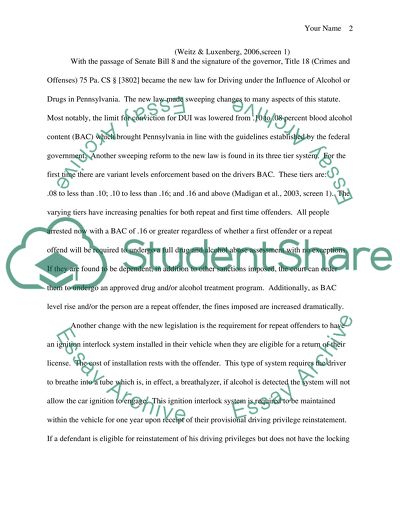Cite this document
(Pennsylvania Drunk Driving Laws Assignment Example | Topics and Well Written Essays - 1000 words, n.d.)
Pennsylvania Drunk Driving Laws Assignment Example | Topics and Well Written Essays - 1000 words. https://studentshare.org/law/1534660-pennsylvania-drunk-driving-laws
Pennsylvania Drunk Driving Laws Assignment Example | Topics and Well Written Essays - 1000 words. https://studentshare.org/law/1534660-pennsylvania-drunk-driving-laws
(Pennsylvania Drunk Driving Laws Assignment Example | Topics and Well Written Essays - 1000 Words)
Pennsylvania Drunk Driving Laws Assignment Example | Topics and Well Written Essays - 1000 Words. https://studentshare.org/law/1534660-pennsylvania-drunk-driving-laws.
Pennsylvania Drunk Driving Laws Assignment Example | Topics and Well Written Essays - 1000 Words. https://studentshare.org/law/1534660-pennsylvania-drunk-driving-laws.
“Pennsylvania Drunk Driving Laws Assignment Example | Topics and Well Written Essays - 1000 Words”. https://studentshare.org/law/1534660-pennsylvania-drunk-driving-laws.


